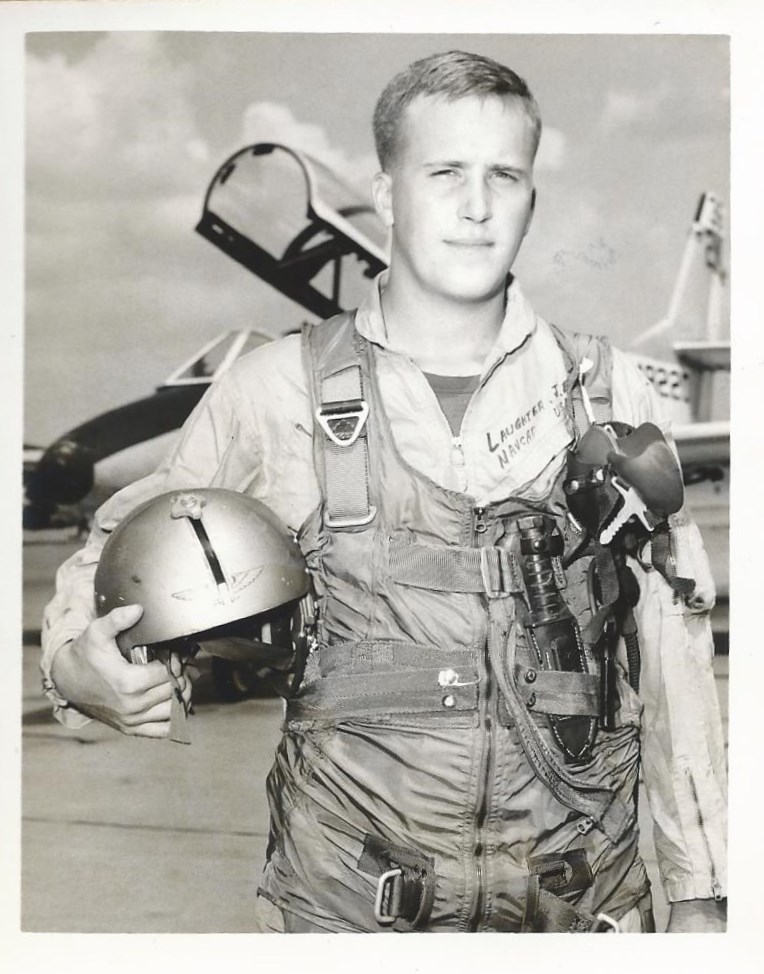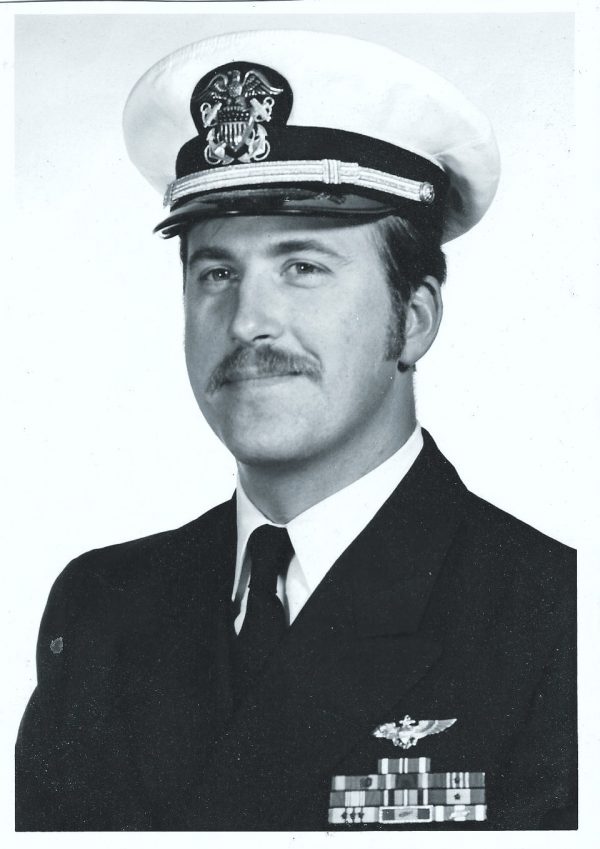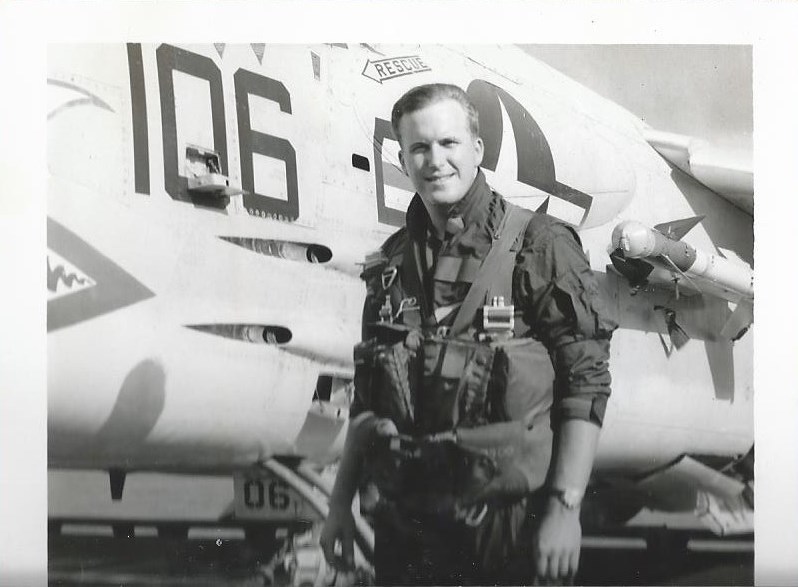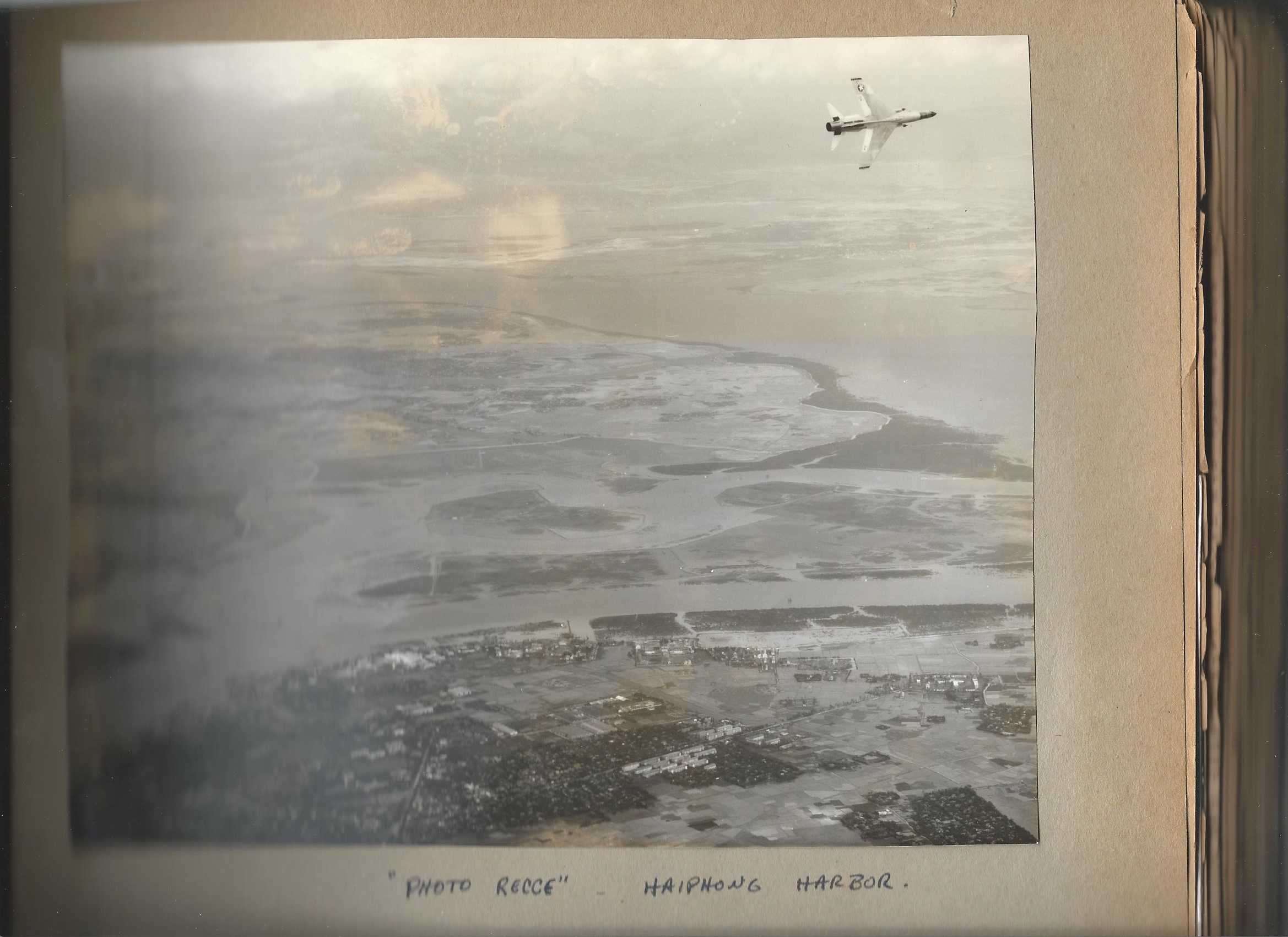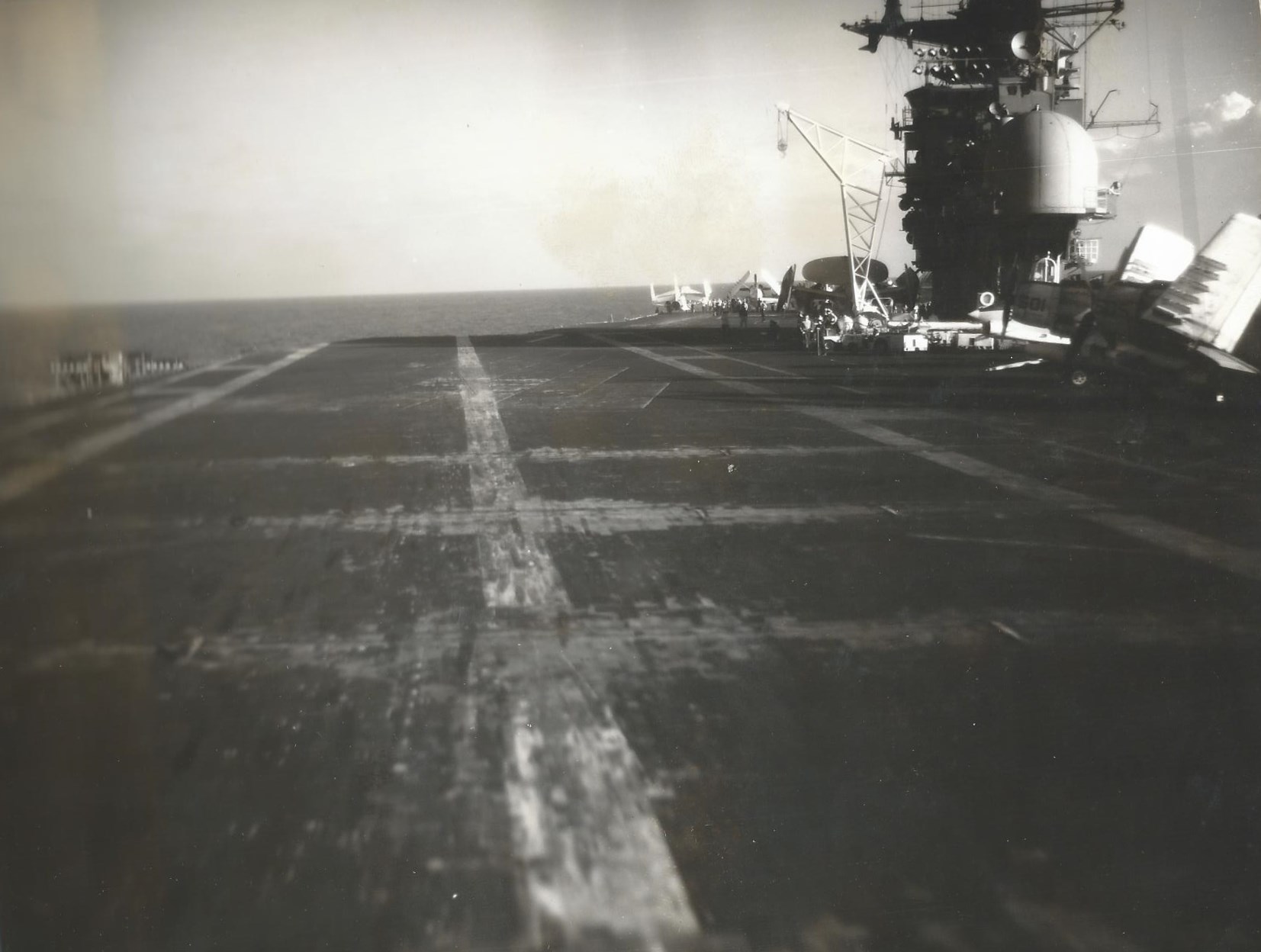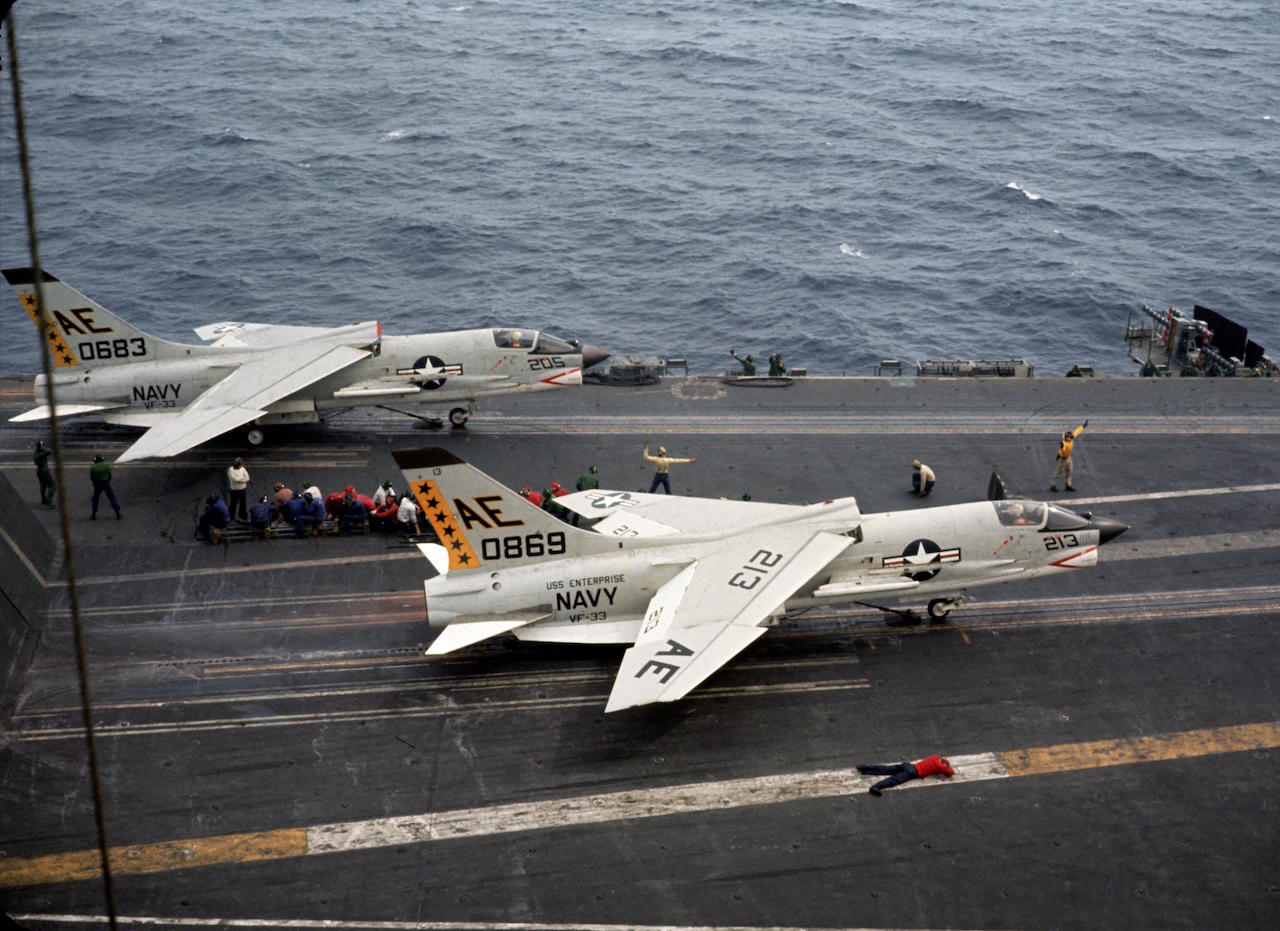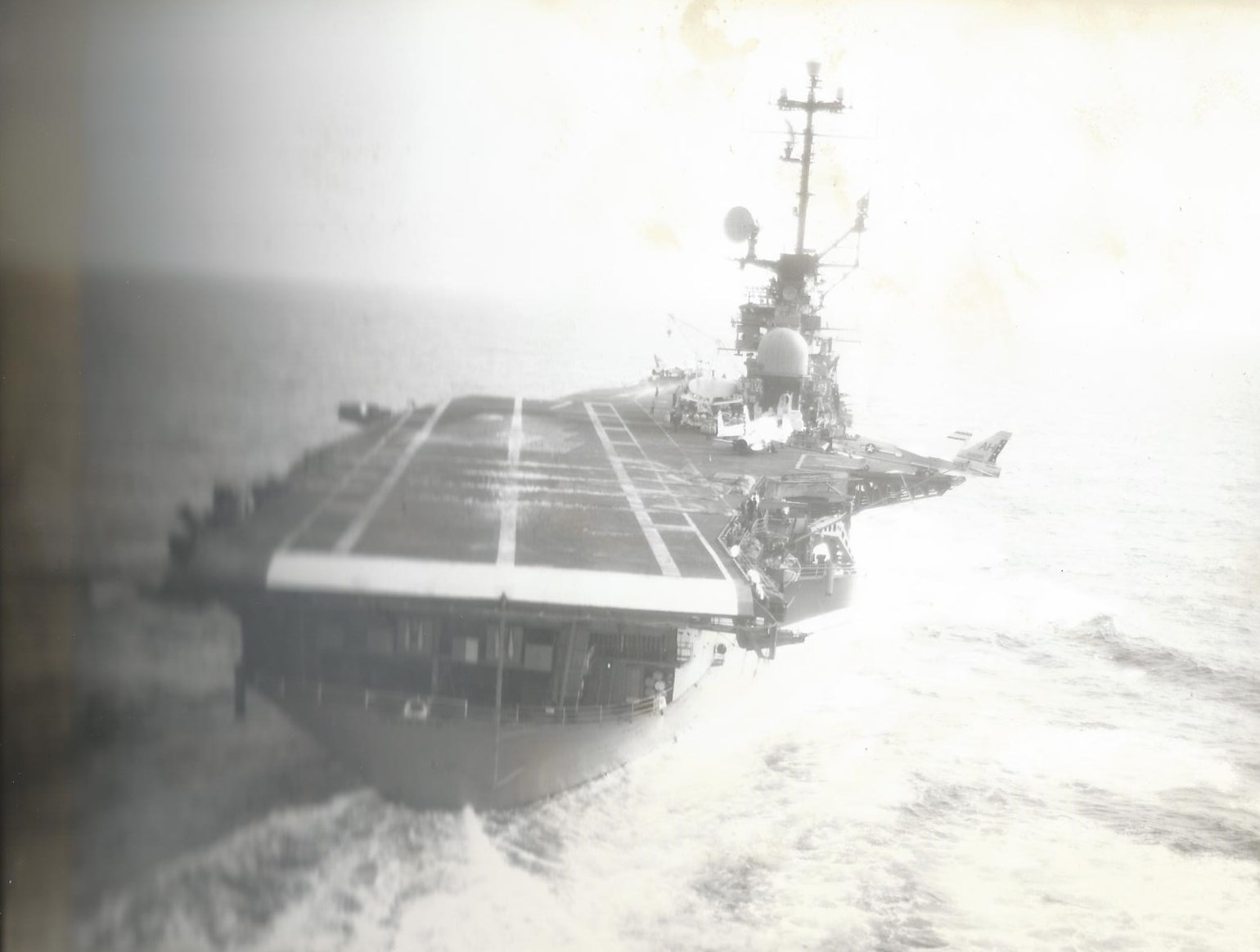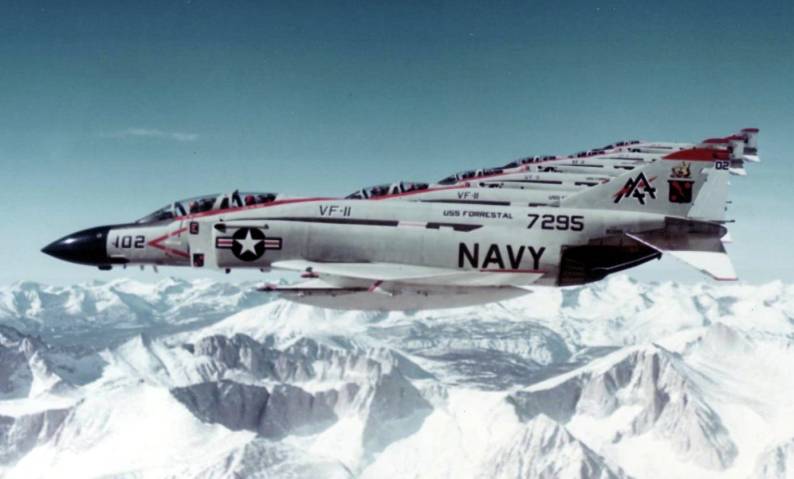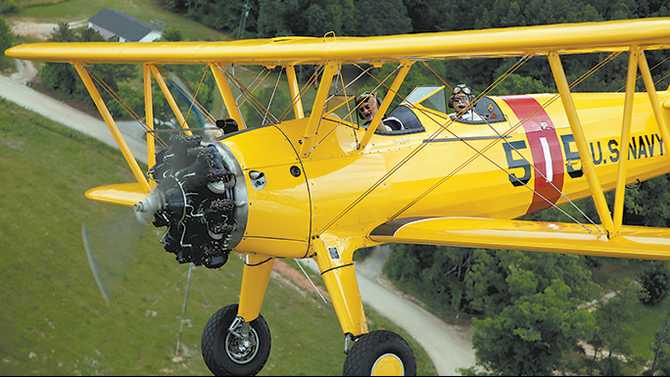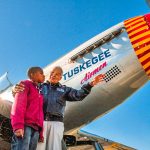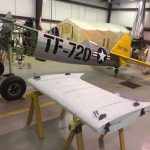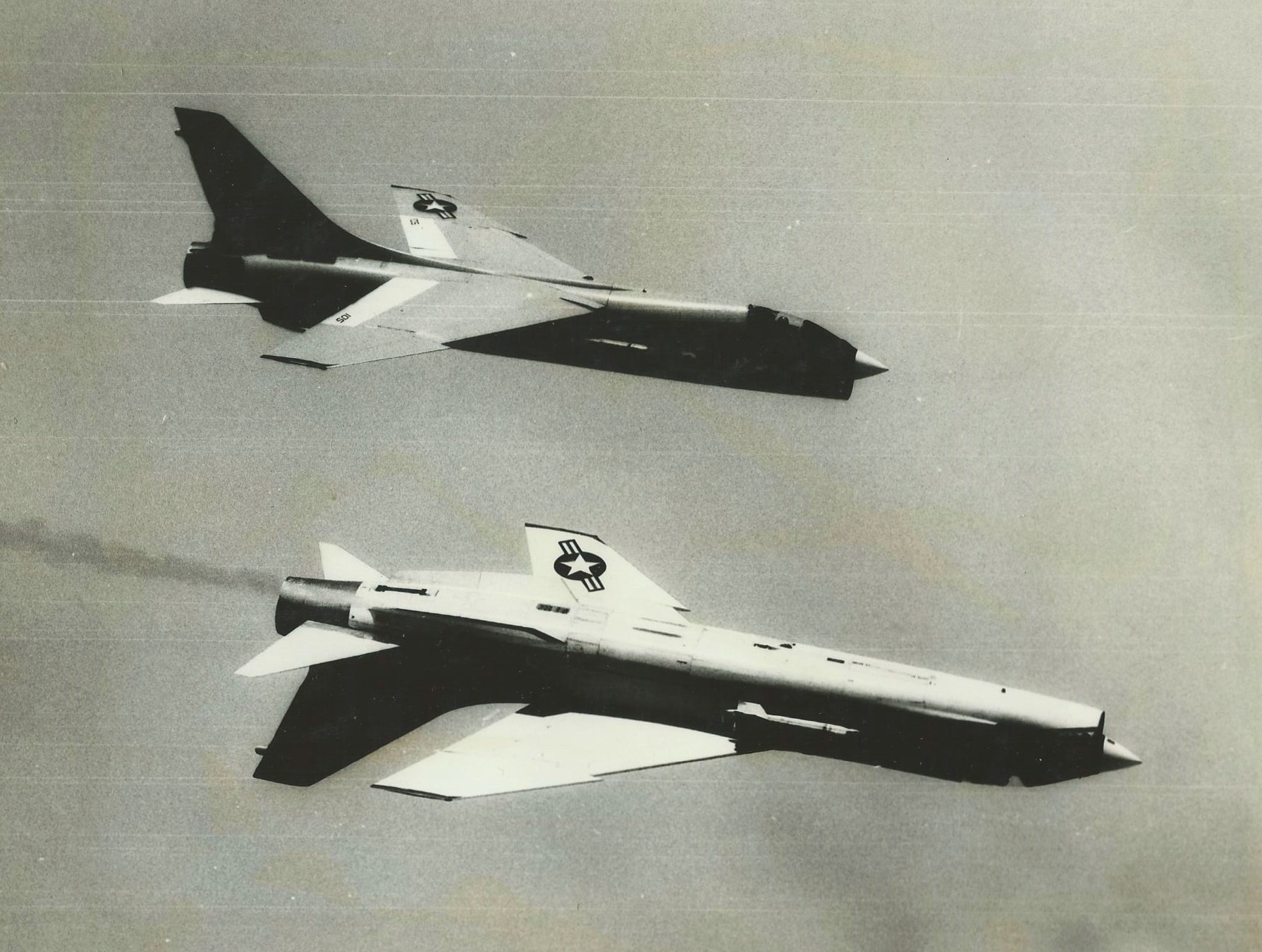
By Pete Mecca.
Arranging an interview quickly turns into something very special when the veteran suggests, “Let’s just fire up the old Stearman and fly down to Peach State Aerodrome for lunch at Barnstormer’s Grill. Then we can fly back for an interview at my house.” Needless to say, nobody had to twist my arm.The grass airfield in Williamson, GA is also home to the Candler Field Museum and the Civil Air Patrol. Pilots who frequent Barnstormer’s are seasoned aviators with thousands of hours behind the controls of contemporary aircraft, but these guys would feel right at home inside the cockpit of a WWI era Sopwith Camel, a French Spad, or the Fokker Dreidecker (tri-plane) of Red Baron renown. Loiter around the grass field long enough and you may see a floppy-eared Beagle land his dog house.
John Laughter can recite Barnstormer’s menu by heart from one too many hamburgers and gooey desserts shared with other daring young men and their flying machines. Thing is, many of the flyboys are no longer young and their machines are older than they are, but in aviation ‘older’ means an enormous amount of hard-earned experience by trial and error, sometimes even the death of a wingman. As a Navy fighter pilot Laughter flew into the most heavily defended country of his era, a place called North Vietnam. And this is his story.
“I was born into a family of aviators in Horse Shoe, NC. My dad served with the 101st Airborne in WWII. He was severely wounded on the 2nd day of the Normandy invasion which ended his military career but that didn’t stop him from becoming a private pilot, even with a steel pin in his leg. Dad soloed after 4 hours of instruction. My mom had a fear of flying but conquered that fear to become the 2nd licensed female pilot in western North Carolina. My uncle trained young pilots during WWII using the Stearman biplane. He became a commercial airline pilot and took me for my first flight in a Globe/Temco Swift. I fell in love with aviation and decided then and there I wanted to be a fighter pilot then a commercial pilot. I remember going to the airfield with the family when I was 10 years old and sitting in the cockpit of a Stearman duster. I bought that same Stearman in 1985.”
John’s third year of college at East Carolina gave him the opportunity to fulfill his aviation dream. “Navy recruiters were on campus and offered me a ride in a T-34 (Beechcraft Mentor). Of course I took the ride then said to myself, ‘Yep, this is for me.’ I signed up and arrived in Pensacola in Dec of ’64. I figured the US Navy had a plane waiting for me with my name on it, but I soon found out things didn’t work that way.” John said of his youthful rebellious nature, “You know, after joining the Navy I realized everything my dad had taught me made sense. Dad was a disciplined man, and it helped me become the aviator I am today.” Pre Flight School at Pensacola paved the way for primary flight school at Saufley Field. John recalled, “I soloed in the T-34 and learned basic acrobatics but kept wondering if jets or props would be in my future. Luckily I got jets and was sent to Meridian, MS to master the T-2 (North American Buckeye).” Proficient behind the controls of a Buckeye, John returned to Pensacola for gunnery school and carrier qual (qualification). Carrier landings and takeoffs would be mastered on the legendary USS Lexington stationed in the Gulf of Mexico. His thoughts on his first carrier landing, “I didn’t think that much of it because of all the training the Navy had given me. Everything went as I had been briefed. My first shot (catapult) off the carrier was perfect…. breathtaking, but perfect.”
Next port-of-call: Chase Field in Beeville, TX, to train on the F-9 Cougar and F-11 Grumman Tiger. One F-11 training mission caused a bit of a problem. “I was rolling in on target in the Gulf during gunnery training when the ‘low oil pressure’ warning light came on. I headed for Corpus Christi and called in my emergency. I’m on a precautionary approach and let the gear down…then the darn plane falls out of the sky. Normal thrust failed, the gear is sucked back up, engine power was not normal, so I’m just hoping for the best. I made it to the short runway but had to shut down the engine on final approach and dead stick it back down to earth. I made it okay.”All his experience, all his training, all he ever learned about flying would now come into play. Assigned to VF-124 squadron at Miramar near San Diego, John mastered the F-8 Vought Crusader supersonic Navy fighter, “a wonderful plane,” he stated, “Plus I married my forever sweetheart, the beautiful Carole Bowden.” After winning Carole’s affection, John reported to the Sundowners of VF-111 and by April of ’67 set sail for Westpac aboard the USS Oriskany. His destination was Yankee Station in the Gulf of Tonkin off the coast of North Vietnam.
Upon arrival: “We had experienced guys on the Oriskany from the year before who briefed us on their experiences, but it didn’t help too much because of the new targets, the capitol city of Hanoi and the major port of Haiphong. I flew ‘iron hand’ combat escort for A-4 Skyhawks, a few flak suppression missions with Zuni missiles, TarCap, Barcap, Migcap, and photo recon escort. We lost one plane per day the first week then didn’t lose a plane for one day only, then lost two the next day. My F-8 was the C model without hard points on the wing. We carried 4 Zuni rockets or 4 Sidewinders. The E model F-8s carried bombs because they had hard points on their wings.”
Tactics: “A Skyhawk would fly an Iron Hand mission and launch a Shrike missile at a SAM (surface to air missile) location. The Shrike would fly right down the SAM’s radar beam and destroy the site, unless they saw it coming and quickly shut down their system. Our Crusaders would protect the A-4s plus escort strike forces into their target. We actually drew the SAMs toward us and away from the strike force. One tactic was to let loose a Zuni toward Hanoi to make the SAM operators shut down their radar because the Zuni looked like a Shrike coming at them. The North Vietnamese had 37mm, 57mm, 85mm, and I think some 100mm guns plus SAMs. One of their tactics was to form a ‘cone’ of anti-aircraft fire which our planes were forced to maneuver through. If we missed the target we’d have to go back another day and fly through the ‘cone’ again.”
On losing a pilot: “It was tough. You’re sitting in a briefing room with 30 pilots and you know that one probably isn’t coming back. You just hope it’s not your day to be that missing pilot. On our first cruise the A-4 Skyhawks took a pounding, about 28 planes either lost or damaged. We also used ‘wet-winging’ to improve our survival rate. If you’re shot up and leaking fuel and lucky enough to reach the sea then an aerial fuel tanker would hook up to you and keep pumping fuel into your plane to replace the fuel being leaked. Some holes in our planes were large enough to stick your head through.”
The cameraman: “One of our pilots named Stattin used his own 8mm camera to film our missions. We called him Cecil B. DeStattin. On one mission he was filming SAMs heading our way when he realized a SAM was heading right for him. He broke hard to avoid the missile but the 400lb warhead exploded and peppered his aircraft with shrapnel. He made it back with over 100 holes in his plane.” – “We continued to hit the enemy hard and did not back down because of our losses. We did the best we could under the circumstances and did it for our wingman and our squadron. The war protests back home didn’t bother us at all.” Their tour complete, the Oriskany headed for Hong Kong during Christmas. “That didn’t last long,” John recalled. “The replacement carrier was delayed so we had to go back in action for 10 days in January of ’68. Those 10 days cost us 2 more planes and 2 more pilots.” Thus ended the bloodiest combat cruise of the Vietnam War.
Special note: Up against enemy Mig fighters, the Crusaders earned the nicknames “Mig Master” and “Last of the Gunfighters.” Migs did not come up against the Crusaders very often because they would probably lose the engagement. The final tally was 19-3 in favor of the Crusaders, the best of the war. On Laughter’s first cruise his squadron only had one Mig engagement: 6 Migs against 1 Crusader and ended with 1 Mig shot down. Once home in San Diego a reserve F-8 squadron called up by President Johnson took over the fighter planes. “Well, that didn’t work out too well,” John said. “Most if not all of the reserve pilots were commercial airline pilots. They took over the squadron’s airplanes but bellyached about everything, including their loss of pay. Then the Navy discovered these guys couldn’t land on carriers at night. The Navy sent them home then gave us back our planes.”
John recalled an important event during his first tour. “I forgot to tell you about the USS Forrestal disaster. Our sister carrier was launching planes from the VF-11 Squadron on July 29, 1967 when a Zuni missile misfired on the flight deck. The wayward Zuni struck a fully fueled and armed A-4 piloted by future Senator and Presidential candidate John McCain. The resulting explosions and fire killed 134 men, injured 161, and destroyed 21 aircraft. Some of the pilots and aircraft that survived the conflagration were sent over to our carrier, the Oriskany, so the support missions could continue.” – “In late October we struck the thermal power plant in Hanoi. It was on that mission that John McCain went down and became a POW. You know, our newest weapon at that time was the Walleye (first in a series of ‘smart’ bombs) that our pilots knew very little about. But the North Vietnamese had all the information they needed on the Walleye; they knew how to jam or evade the weapon. We basically had a traitor in the U.S. And let me mention Jane Fonda. The photo of her sitting in the seat of a North Vietnamese anti-aircraft gun irked all of us; it was hard to swallow. We were on the receiving end of the gun and her actions only encouraged our enemies. Most of us still hold a grudge about that but we don’t dwell on it.”John’s second tour on Yankee Station wasn’t a cake walk but did offer less of a risk. “President Johnson had initiated another bombing halt which took Hanoi and Haiphong plus other important targets off the bombing list. We still had losses but not as severe as the first tour of duty. We did our job; we served our country, and we were proud of our service.”
John Laughter flew a total of 155 combat missions into North Vietnam. His Crusader never received a hit, not one scratch. “Yeah, I was lucky; I know that.” Grinning, John said, “I guess my Guardian Angel received a lot of overtime pay.” How good is a combat experienced Navy pilot? John Laughtner received high marks at the very first Top Gun school, helped develop new tactics to fight enemy Mig fighters, transferred to the East Coast and flew F-4 Phantom Jets off the refurbished USS Forrestal as a member of the legendary VF-11 ‘Red Ripper’ Squadron, and served as a weapons training officer.
On hitting the silk: “I was in test squadron VX-4 at Point Magu, CA. We normally used the Pacific Missile Range as our primary operating area. On day while maneuvering behind an F-4 during a simulated dogfight my F-8 went out of control and rolled to the right. One of the connecting rods had broken. I managed to regain some control but could only perform right turns. After struggling with the aircraft for about 15 minutes I knew it was time to eject. We were over the desert, very few houses, and I maneuvered toward the barren mountains. I pulled the handle then the rocket seat ejected me out of the aircraft. It would take me a lifetime to explain my thoughts during the few seconds before the chute opened, but I can tell you this, when that orange and white parachute deployed it was without a doubt the most beautiful thing I’d ever seen.” After all of John’s careful planning and piloting, the F-8 still landed in a guy’s backyard. John recalled, “The jet just spun in. No injuries occurred on the ground, but there was not one piece of the jet you couldn’t pick up in your hand.” The Crusader’s engine was found buried 28 feet into the ground.
After 8½ years flying Navy jets, John decided on a career in commercial aviation. He retired in 2003 from Northwest Airlines. Asked how many different aircraft he had flown, John replied, “It would be easier for me to name the planes I haven’t flown.” His final thoughts on the war in Vietnam: “Vietnam was a terrible war that was terribly managed. We lost a lot of good people, then in the end we gave it all away. For me, it was a good time in my life, learning who I am and what I am and operating under pressure. But you know, we have heard ‘no more Vietnams, never again,’ yet we see them doing the same thing over and over and losing everything we’ve gained. I just don’t get it.”
Article by Peter Mecca
Pete Mecca is a Vietnam veteran. For story consideration or comments: [email protected]








